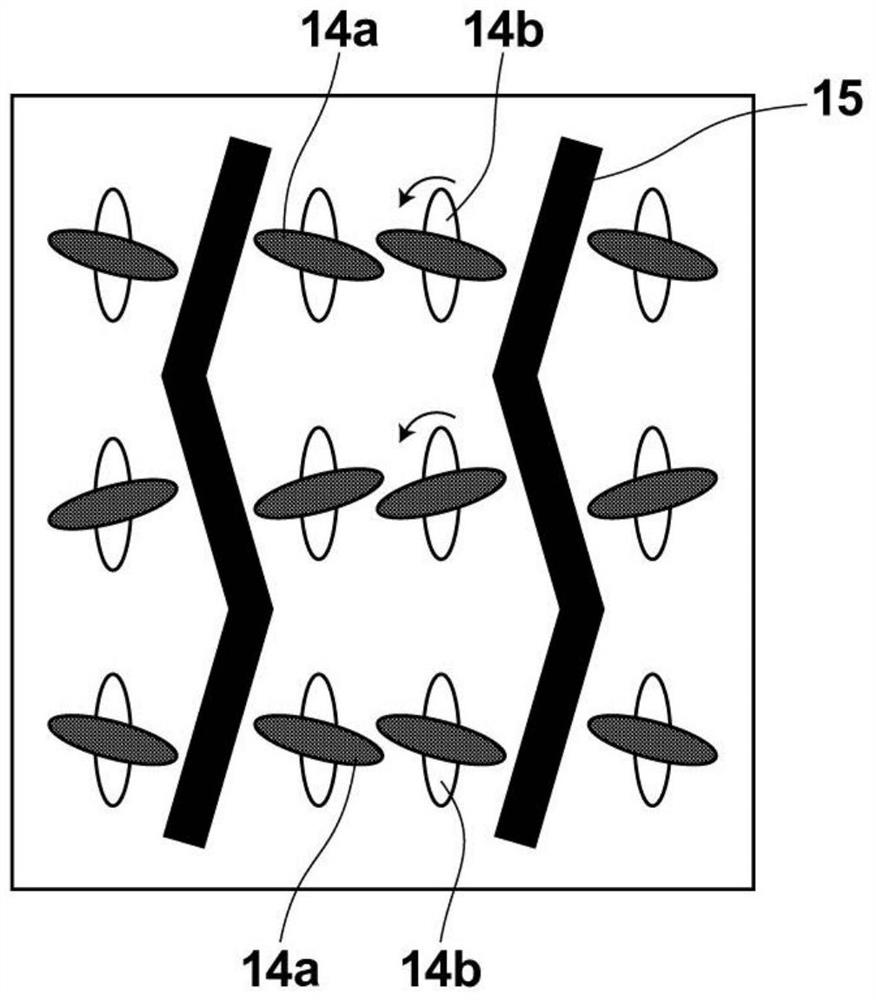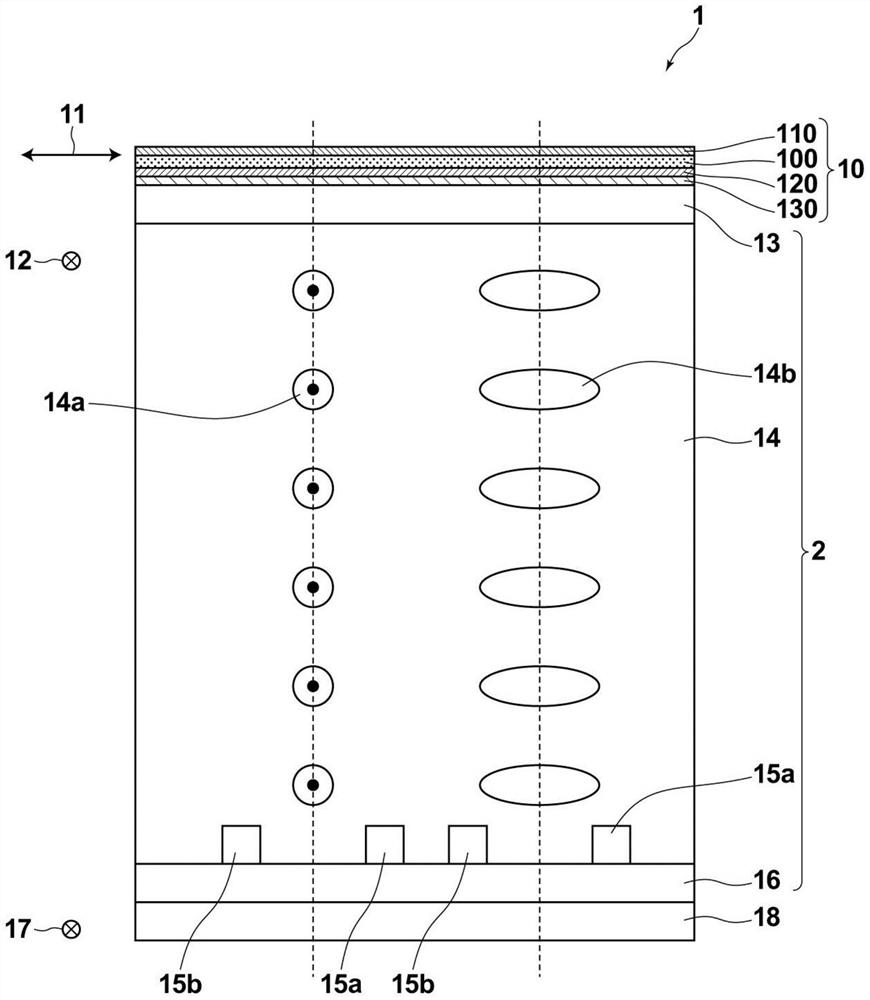Optically anisotropic layer and method for producing the same, laminate, polarizing plate, display device, liquid crystal compound and method for producing the same, carboxylic acid compound
An optical anisotropy, liquid crystal compound technology, applied in chemical instruments and methods, optics, polarizing elements, etc., can solve problems such as the influence of display characteristics
- Summary
- Abstract
- Description
- Claims
- Application Information
AI Technical Summary
Problems solved by technology
Method used
Image
Examples
Embodiment 1
[0282] Compound (I-1) was synthesized according to the following scheme.
[0283]
[0284]
[0285] Succinic acid mono(2-acryloyloxyethyl) ester (I-1A) 182g (839mmol), ethyl acetate 600mL, N,N-dimethylacetamide 150mL, 2,6-di-tert-butyl- 680 mg of 4-methylphenol was mixed, and the internal temperature was cooled to 5°C. 642 mL (879 mmol) of thionyl chloride was added dropwise to the mixture, taking care not to raise the internal temperature above 10°C. After stirring at 5° C. for 1 hour, a solution of 111 g (800 mmol) of 2-(4-hydroxyphenyl)ethanol in 220 mL of N,N-dimethylacetamide was added. Then, after stirring at room temperature for 12 hours, 400 mL of water was added for liquid separation. The collected organic layer was washed with 1N hydrochloric acid water, saturated sodium bicarbonate water and saturated brine, and dried over anhydrous sodium sulfate. Sodium sulfate was filtered off, and the solvent was removed by a rotary evaporator to obtain 255 g (758 mmol) ...
Embodiment 2
[0296] Compound (I-2) was synthesized according to the following scheme.
[0297]
[0298]
[0299] 40g (307mmol) of 2-hydroxyethyl methacrylate (I-2a), 300mL of dichloromethane, 3.8g (30.7mmol) of N,N-dimethylaminopyridine, 33.8g (338mmol) of succinic anhydride, 2, 200 mg of 6-di-tert-butyl-4-methylphenol was mixed, and the inner temperature was heated to 40°C. After stirring for 12 hours, it was cooled to room temperature, and 300 mL of water was added and stirred for 1 hour for liquid separation. The collected organic layer was washed with 1N hydrochloric acid water and saturated brine, and dried over anhydrous sodium sulfate. Sodium sulfate was filtered off, and the solvent was removed by a rotary evaporator to obtain 64 g (278 mmol) of compound (I-2A) as a clear oil (91% yield).
[0300]
[0301] Mix 30 g (130 mmol) of compound (I-2A), 50 mL of ethyl acetate, 15 mL of N,N-dimethylacetamide, and 100 mg of 2,6-di-tert-butyl-4-methylphenol, and cool the internal tem...
Embodiment 3
[0309] Compound (I-3) was synthesized according to the following scheme.
[0310]
[0311]
[0312] Compound (I-3A) was synthesized in the same manner as in Example 2, except that Compound (I-2a) in the synthesis method of Compound (I-2A) described in Example 2 was changed to Compound (I-3a). The rate is 92%).
[0313]
[0314] Compound (I-3B) was synthesized in the same manner as in Example 1, except that Compound (I-1A) in the synthesis method of Compound (I-1B) described in Example 1 was changed to Compound (I-3A). The rate is 94%).
[0315]
[0316] Compound (I-3C) was synthesized in the same manner as in Example 1, except that Compound (I-1B) in the synthesis method of Compound (I-1C) described in Example 1 was changed to Compound (I-3B). rate of 70%).
[0317] 1 H-NMR (solvent: CDCl 3 )δ (ppm): 1.45-1.72 (m, 4H), 1.72-1.80 (m, 4H), 2.10-2.30 (m, 4H), 2.33-2.45 (m, 1H), 2.47-2.65 (m, 1H) , 2.62(s, 4H), 2.93(t, 2H), 4.10-4.22(m, 4H), 4.30(t, 2H), 5.83(dd, 1H...
PUM
 Login to View More
Login to View More Abstract
Description
Claims
Application Information
 Login to View More
Login to View More - R&D
- Intellectual Property
- Life Sciences
- Materials
- Tech Scout
- Unparalleled Data Quality
- Higher Quality Content
- 60% Fewer Hallucinations
Browse by: Latest US Patents, China's latest patents, Technical Efficacy Thesaurus, Application Domain, Technology Topic, Popular Technical Reports.
© 2025 PatSnap. All rights reserved.Legal|Privacy policy|Modern Slavery Act Transparency Statement|Sitemap|About US| Contact US: help@patsnap.com



